The Best Horror Movies Based on Ghost Stories

Ghost stories have been virtually forever, and will haunt us long without we are ghosts. Before film, most wraithy tales came from novels or short stories. Yes, there were oral traditions of the spooky place lanugo the woodcut or the hitchhiker on a lost highway, but usually someone put it lanugo in a book. Some of the greatest films well-nigh hauntings originate as full talkie creations, with a director’s visionless vision on the screen, others come from true cases or urban legends. These ghost stories are novel ideas.
This is by no ways a well-constructed list. Almost every Edgar Allan Poe mucosa version has a spectral presence; Charles Dickens’ nighttime visitors in A Christmas Carol are only ghosts of presents we wrap for seasonal coverage; director Lew Allen’s 1944 horror full-length The Uninvited isn’t here considering I haven’t read Dorothy Macardle’s Uneasy Freehold (1941), which it was based on yet; The Amityville Horror comes from a novel, but is tangibly “a true story” (which you can read well-nigh here). These ghost movies come from the imagination and the page. Two things that go well in the dark.

11. The Woman in Woebegone (2012)
Director James Watkins’ The Woman in Black lists Daniel Radcliffe in the lead role, but the most intriguing weft is the mansion. Local children stave it, only one road leads to it, and that trail is submerged by a bog a few times a day. Just like the opening in any version of Dracula, superstitious transport drivers don’t make stops at the Eel Marsh House. Based on Susan Hill’s 1983 novel, The Woman in Black is genuinely haunting, though not particularly scary. The Hammer Horror production drowns the proceedings in gloomy undercurrent and the tone of Victorian-era ghost fiction, but only really lets loose in one truly creepy all-nighter.
Set in 1906, Arthur Kipps (played here by a post-Harry Potter Radcliffe) is a widowed lawyer from London with a four-year-old son when he travels to the remote village Crythin Gifford. A vague woebegone spirit, believed to be the vengeful ghost of a mother who lost her child, is terrorizing the locals. Kipps is there to settle her legal affairs. If he fails, his firm assures him this will be his last assignment. To ensure that end, distrusting locals fill his throne with notions until secrets and rumors are nonflexible to tell apart, and the Woman (Liz White) herself, never gives him the time of day, and only barely in the evenings. Elegant and mannered, The Woman in Black contains all the environment of archetype late night reading.
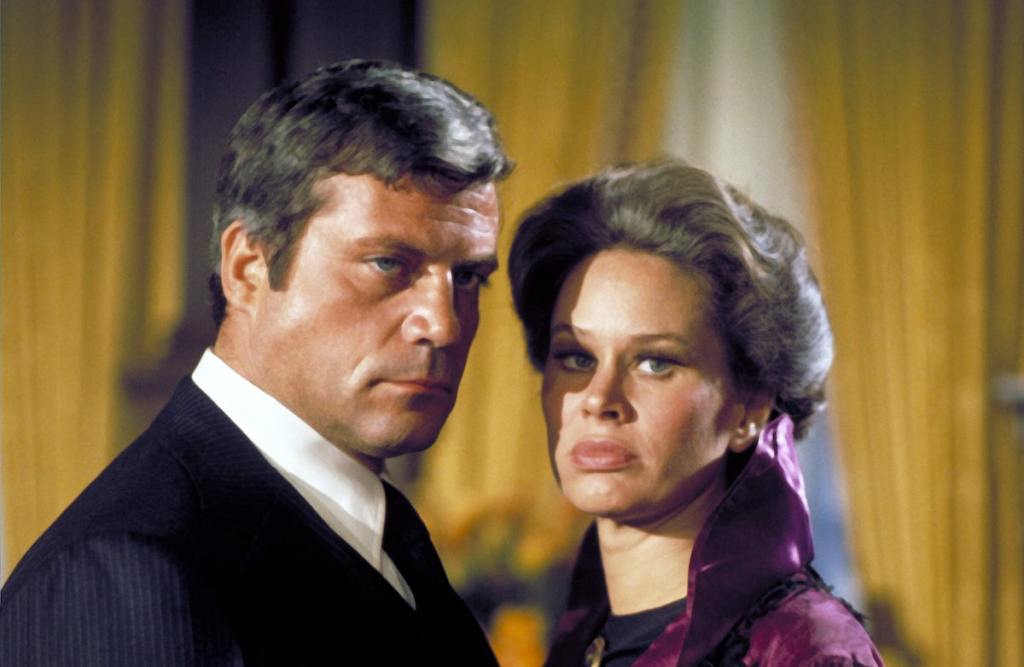
10. Burnt Offerings (1976)
Buyer beware! If the owner of the mansion you’re well-nigh to rent says the place takes superintendency of itself, you might want to rethink the offer. Based on Robert Marasco’s 1973 novel, Burnt Offerings is director Dan Curtis’ only theatrical film—-made without he redefined horror on television. Curtis flubs the book’s zipped ending, but he does present one of horror’s most unique fixer-uppers. Like the novel, the story feels disjointed, but it could be the house. Filmed in the Dunsmuir House, the neo-classical 19th-century, 37-room mansion is the main witchery of the film, and would go on to star as the mortuary in Phantasm (1979).
The Allardyce mansion seems like the perfect vacation spot for Ben (Oliver Reed), his wife Marian (Karen Black), and their son David (Lee Montgomery). The sibling owners, Arnold (Burgess Meredith) and Roz Allardyce (Eileen Heckart), only need one thing looked after. Not the house, of course, as they said, it takes superintendency of itself. It’s their elderly mother (Lee Montgomery), a recluse who takes in trays of supplies when no one is looking and deposits them outside her room for thrice-daily refills. Nothing spooky there.
Bette Davis plays Ben’s Aunt Elizabeth, an ungifted woman with an eye for detail, something Marian could use when her husband and son roughhouse in the pool. Karen Black’s split personality reading of the house’s possession of Marion is hair-raising. One squint in those delusional vision is as emotionally rabble-rousing as Black’s unshortened ventilator in Trilogy of Terrors. The horror is psychological in Burnt Offerings, but very real to Marion.
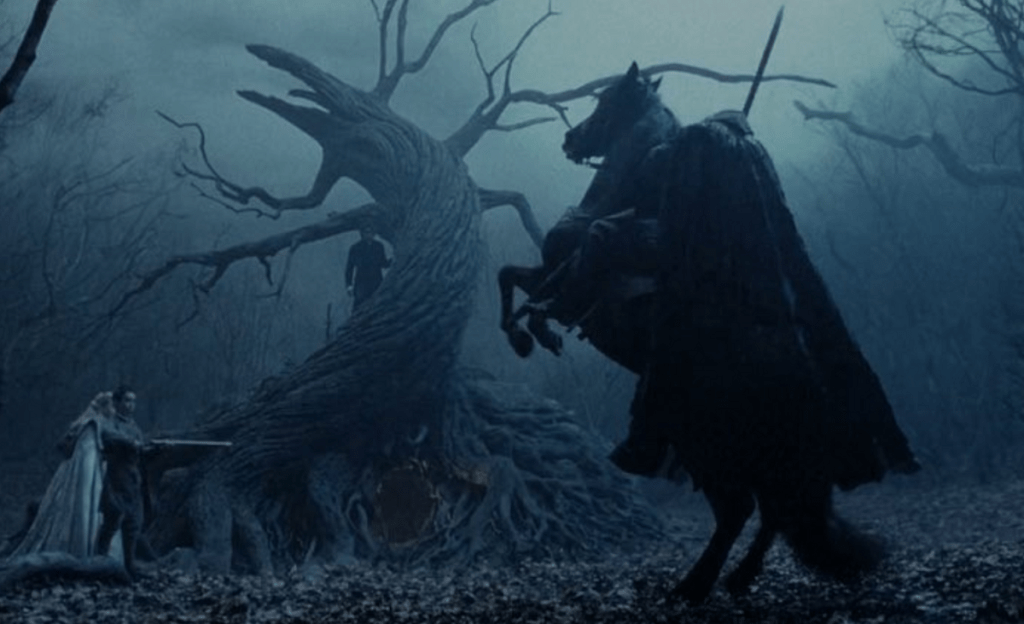
9. Sleepy Hollow (1999)
Tim Burton’s Sleepy Hollow is very loosely based on “The Legend of Sleepy Hollow.” Washington Irving’s 1819 short story studies the myth of the Headless Horseman, believed to be a Hessian soldier who was decapitated by a cannonball. That throne would be easier to find than Irving’s original tale in this adaptation.
The mucosa follows New York Municipality police patrolwoman Ichabod Crane (Johnny Depp) who is ready to bring the legal system into the “dawn of a new millennium,” with improved methods of investigation and true justice. His do-gooding enthusiasm gets him sentenced by an ill-intending judge to the rural upstate New York village of Sleepy Hollow—banished there to investigate a series of beheadings performed by what witnesses believe to be a mysterious headless horseman.
“The heads were not found by the bodies?” asks Ichabod, only to learn no noggins have been found at all. The Horseman takes the skulls with him. The heads show up eventually, withal with an iron maiden and other tortuous implements of horrific wonder. Sleepy Hollow is a gory movie that feels like an elegant Hammer Horror film. It is as sumptuously shot as Francis Ford Coppola’s Bram Stoker’s Dracula. The production design, art direction, and cinematography create a distinctly skewered atmosphere, and there are times we finger like fleeing on horseback in fear. Christina Ricci glows darkly as Katrina Van Tassel, the daughter of Baltus (Michael Gambon), the richest of the old burghers. Too bad he can’t buy his way out of his by-the-book-but-not-the-novel ending.
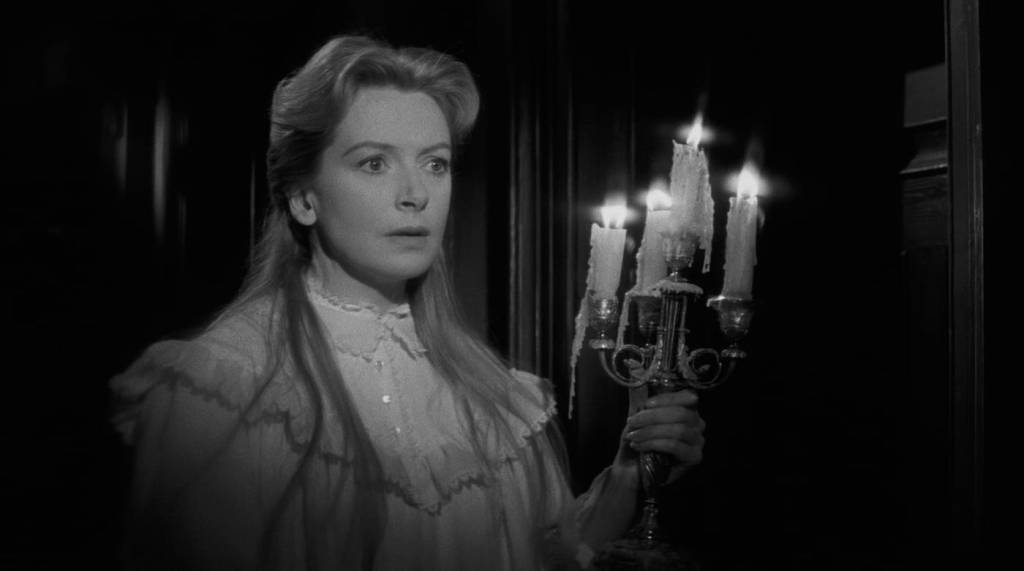
8. The Innocents (1961)
The ghosts are both metaphoric and literal in Jack Clayton’s The Innocents, where sexual repression and diaper marvel are a lethal mix. Henry Jamess 1898 novella The Turn of The Screw has been well-timed 27 times for the screen. The Innocents is the most faithful, plane if it personalizes the details on the broader skim strokes. The screenplay was co-written by Truman Capote and William Archibald, the playwright of the 1950 stage adaptation. They imagined it as a ghost story. It is entirely possible the governess acts on spectral vestige only her mind could see, but from the camera’s perspective, the ghosts are real. Young Flora (Pamela Franklin) and Miles (Martin Stephens) recently lost their parents, and their hastily hired new governess Miss Giddens (Deborah Kerr) has much to learn well-nigh them and the manor they undeniability Bly.
The former governess, Miss Jessel (Clytie Jessop), resigned under vague circumstances, but may have left something behind. A fired valet, Peter Quint (Peter Wyngarde), was a drunk and a roustabout whose musk can still be discerned in the walls. While she may find the spectral vestige alluring, Kerr’s Miss Giddens is a generation older than the weft in the book, and concerned with the responsibilities of increasingly sultana topics. “Most of all, I superintendency well-nigh the children,” she insists, but the children are, to put it nicely, disconcerting.
Precocious and vaguely unnatural, every phrase from their lips teeters between innocent flattery and threatening suggestion. When Miles is expelled from school as a bad influence, Miss Giddens is empathetic. She likes a boy with spirit and senses an older soul. “Oh, miss, are you wrung he’ll untruthful you?” housekeeper Mrs. Grose (Megs Jenkins) laughs, perhaps too indulgently. It’s creepy.
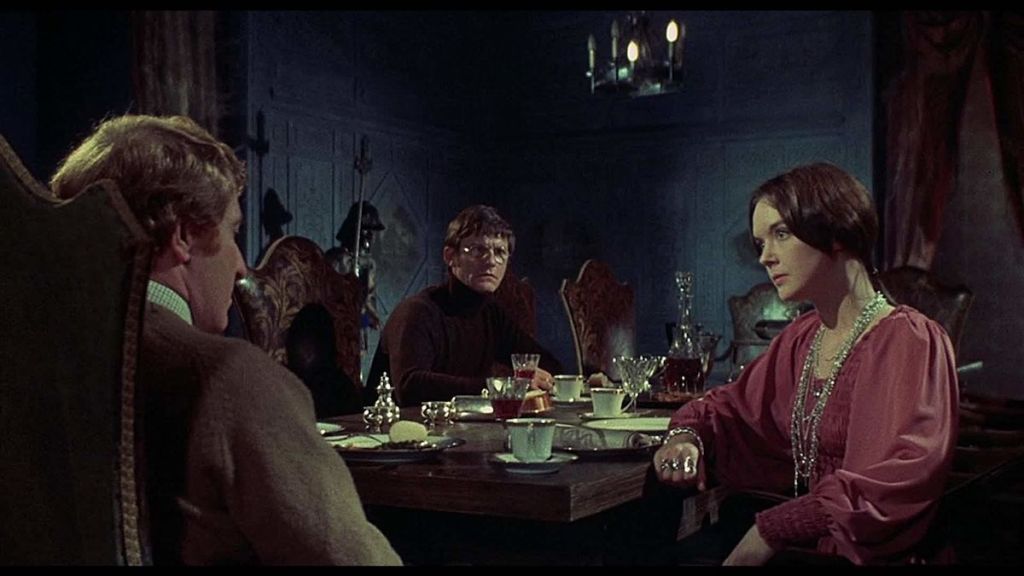
7. The Legend of Hell House (1973)
Director John Hough’s The Legend of Hell House, well-timed by Richard Matheson from his 1971 novel Hell House, is a spooky paranormal investigation mucosa with an uncounted supply of chandeliers to drop. Wealthy Rudolph Deutsch (Roland Culver) wants to know what lies without death, and is almost willing to skiver himself to find out. He hires, at exuberant rates, physicist Dr. Lionel Barrett (Clive Revill), his sensitive wife Ann Barrett (Gayle Hunnicutt), and mental medium Florence Tanner (Pamela Franklin) to go that uneaten mile. Roddy McDowell plays physical parapsychologist Benjamin Franklin Fischer, who is reluctant to join the fun. He is the only survivor of a previous on-site investigation of the Belasco House, notorious as “Hell House” without its infamously decadent owner disappeared in the produce of a massacre within its walls
“In the name of God, what did he do to make this house so evil?” Ann asks. “Murder, vampirism cannibalism, drug addiction, alcoholism, sadism, mutilation,” Fischer answers. How did it end? “If it had ended, we would not be here,” Fischer warns. Strapped to bio-monitors, and surrendered to the abyss, the researchers unshut themselves to the fates of prior victims who now haunt the estate. Considerate unbearable to waif ectoplasmic residue in jars, the ghostly bully collects power from the interloping investigators. But he is powerless versus Fischer’s unabated height-shaming. Be sure to lock the door on your way out.
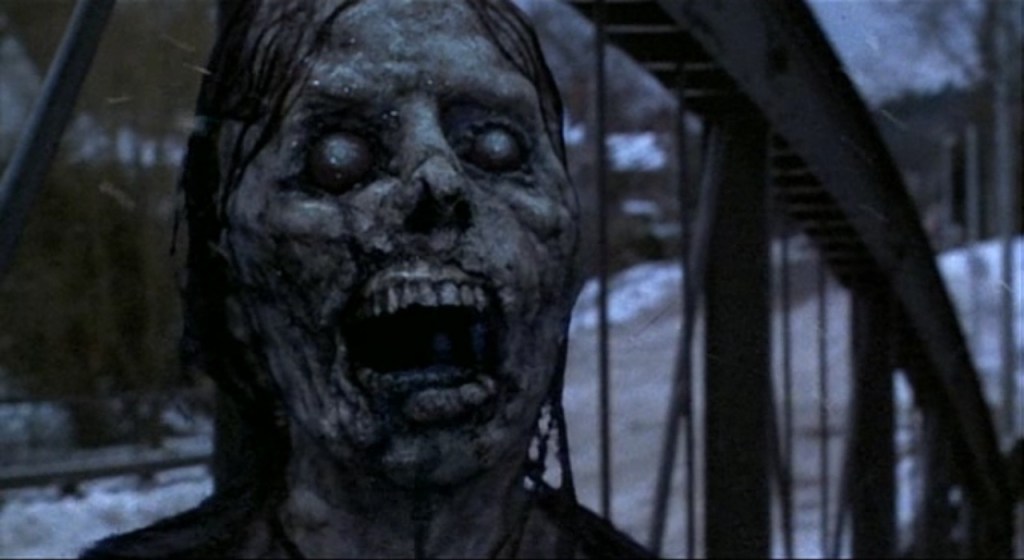
6. Ghost Story (1981)
Ghost Story opens with John Houseman’s Sears James, Esq., telling a terrifying tale as if he were sitting virtually a campfire in John Carpenter’s The Fog (1980), which opened with the same unmistakable voice. He is talking to the “Chowder Society,” an informal men’s club who sip brandy, sniff cigars, and scare each other with horrific improvisations. The elderly orating shyster is normally drinking vacated in his den all night, every night. He is wrung to fall asleep; nightmares moreover plague his former partner, the businessman Ricky Hawthorne (Fred Astaire); and Dr. John Jaffrey (Melvyn Douglas) screams himself awake from terrible dreams. The mayor of the snowy New England town of Milburn, Vermont, Edward Charles Wanderley (Douglas Fairbanks, Jr.), is downing a double shot of night terrors. His son David Wanderley (Craig Wasson) appears to have gotten himself engaged to a rotting corpse, and she looks like the Chowder Society muse.
Based on Peter Straub’s 1979 novel, Ghost Story is weightier known as the last mucosa legendary stars Astaire, Douglas, Fairbanks Jr., and Houseman made together. As both David’s fiancé, Alma Mobley, and the Chowder Club’s bilateral long lost love, Eva Galli, Alice Krige could have stolen this ghost story, but respectfully allows herself to sink into murky oblivion while the light shines on the veteran performers. Directed by John Irvin from a script by Lawrence D. Cohen, who wrote the screenplay to Brian De Palma’s Carrie, they should have been given increasingly screen time. The tint is amazing, the direction is steady, and the typesetting has so much increasingly to offer. Two hours does not do it justice.
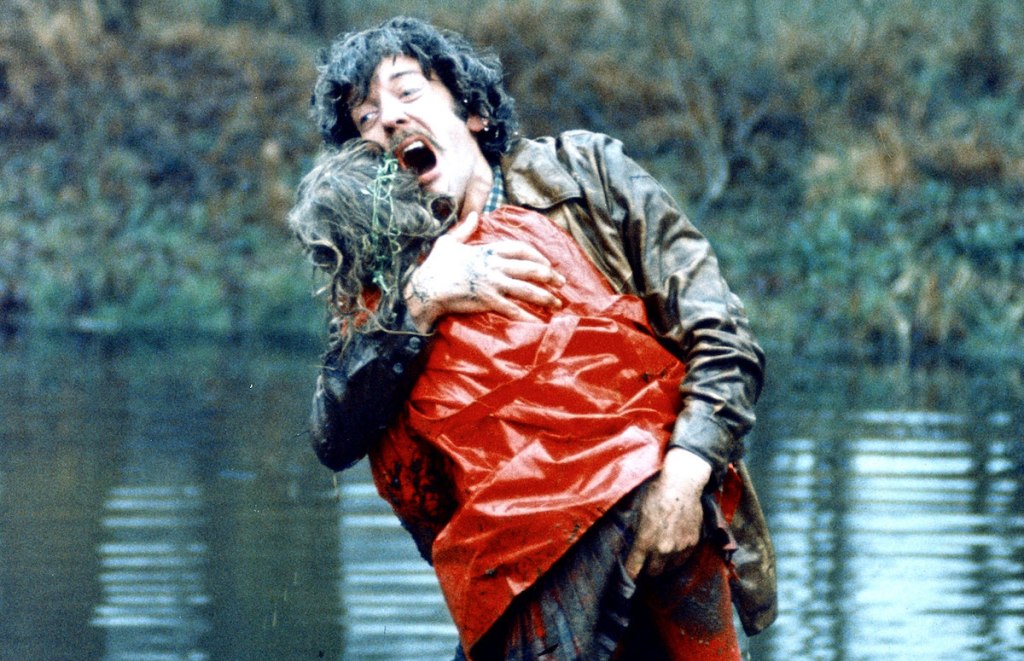
5. Don’t Squint Now (1973)
“Nothing is what it seems,” John Baxter (Donald Sutherland) explains in the opening of Nicolas Roeg’s Don’t Squint Now. Well-timed from Daphne du Maurier’s 1971 short story, the script by Allan Scott and Chris Bryant sticks to the source, and does not recoil at the conclusion. But it is the opening which colors the cinematic experience. The willy-nilly drowning of young Christine Baxter, who played too near a swimming in her shiny red raincoat. We see that red raincoat throughout the film. It is mirrored in the water, through a stained Venetian denomination window, on a afar bridge, overdue two arches in a Venice waterway as a wend passes, and reflected in the vision of Sutherland’s horrified father character, who notices his daughter’s misstep, far too late.
After the tragic loss of their daughter, John and Laura Baxter (Julie Christie), relocate to Venice. A killer is loose in the foggy city, and a child’s doll lies at the whet of a canal. Police are pulling up a body. The Grand Waterway is working with rats. Figures in red slip yonder from John throughout his many walks in the Venetian streets, but the grieving daddy, working as a denomination restorer, doesn’t believe in second sight, omens, or the afterlife. The technie has no tabulation for the unknown, and drowns in his skepticism.
At a lunch, the Baxters meet British tourists Wendy and her sister Heather, who is veiling but psychically gifted, and claims to see Christine. She moreover sees the kinetic tuition in John, knows he foresaw his daughter’s death, and senses he knows what is going to happen. But the future is as uncertain as the sufferer ends and wrong turns on a trip through deserted late-night Venice. Every bridge, canal, and street promise untold horrors which never come, as Roeg leaves you lost in the suspenseful expectation. The mucosa builds ominous off-kilter vaticination and leaves only dread in its wake.
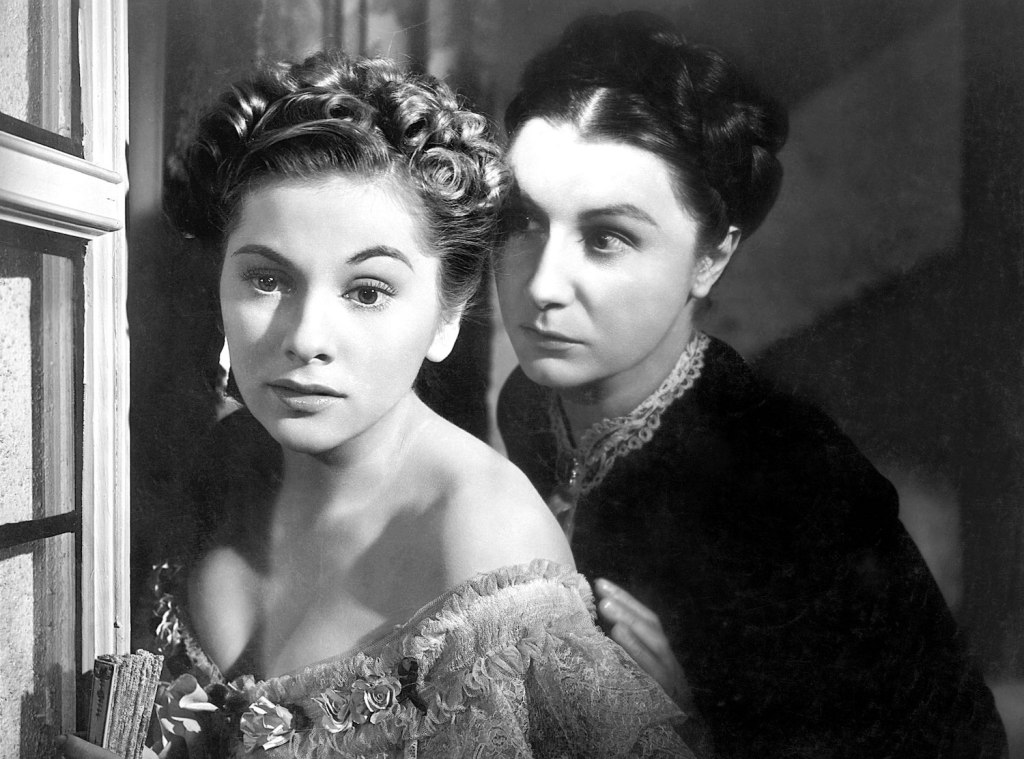
4. Rebecca (1940)
Adapted from Daphne du Maurier’s 1938 novel, Alfred Hitchcock’s ghost romance Rebecca never shows the title character. There are no portraits of her, no photographs, sketches, or drawings. No two-face plays her. The grand painting which tops the family hodgepodge is of a Lady Caroline de Winter, an warmed-over relative. Rebecca de Winter, the late wife of Maxim de Winter (Laurence Olivier), owns the mucosa by her absence, like the most memorable spirits in ghost movies. She haunts it with trappy foreboding. “Last night, I dreamt I went to Manderley again,” we hear as the mucosa opens while Hitchcock’s camera shows the ruined remains of a grand and gloriously gothic past on the Manderly House. “It seemed to me I stood by the iron gate leading to the drive, and for a while I could not enter, for the way was barred to me.”
There is a new Mrs. de Winter now, played with tangibly hopeful optimism by Joan Fontaine, living in the brightly vibrant East Wing while the West Wing is sealed in time like a tomb. Mr. de Winter never calls his wife by a first name. She forfeited that for her husband, withal with any dreams she hid, considering she flattered herself to believe he was in love with her, or so she is told.
She could never hope to live up to the name Rebecca made her own. So we never hear hers. It is a ghost. Judith Anderson is increasingly ghostly than any specter as the throne of housekeeping, Mrs. Danvers. Her every wry whispered drains the very life out the new Mrs. de Winter, forever branded a terminal disappointment. It really is unbearable to make one leap from an unshut window to an unpreventable death. If only the family crypt wasn’t so filled with the persons of unnamed Mrs. de Winters.

3. The Haunting (1963)
We don’t see the ghosts in Robert Wise’s 1963 archetype The Haunting. The regulars catches doors as they slam shut, shadows fading lanugo a screw stairway, or the last few sways of a rocking chair as we enter a room, just a moment too late. “What does it take to convince you that the sufferer do not unchangingly rest in peace, but some houses, like Hill House, are born bad?” we are asked, but the vestige is frustratingly elusive.
Faithfully based on the 1959 novel The Haunting of Hill House by Shirley Jackson, there is no thoroughbred or jump scares in the film, only forbidding atmosphere, intriguing characters, and a nagging uncertainty that we just missed something.
The slow-burning horror works from the inside, just like the 90-year-old Hill House, sitting still in the opening as its history of suicides and murders is told by Dr. John Markway (Richard Johnson). His paranormal research study brings spiritually sympathetic seekers of the unseen to the site. Sensitives like Eleanor Lance (Julie Harris) get lost in the past, witches like Theodora (Claire Bloom) are blindsided by the future, and those who are tabbed to the house are wilting to its malevolent will. Russ Tamblyn plays the cynical Luke Sanderson, who will inherit the house, although a deed does not midpoint possession.
No one owns Hill House; the house possesses them. But it is Eleanor, who experienced poltergeist worriedness as a child, and gave her sultana life for her invalid mother, who holds the most unnatural witchery to the house. The chills are as understated as Theodora’s wintry double entendres, but they build into devastating conclusions.
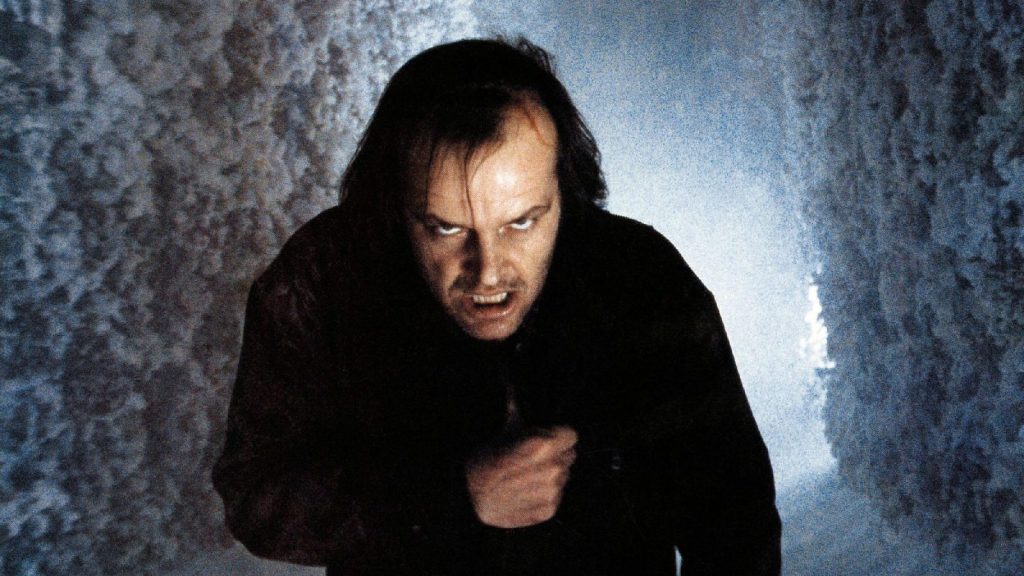
2. The Shining (1980)
Stanley Kubrick‘s 1980 version of Stephen King’s novel The Shining is a masterpiece, whether the Overlook Hotel is haunted or not. Jack Nicholson’s Jack Torrance is a teacher who takes an off-season job maintaining a shuttered luxury vacation spot. He wants to get some peace and quiet in order to write. The Overlook Hotel is not quite the easy job that was advertised. The triviality needs unvarying scrutiny so it doesn’t wrack-up up (at least in the book), and there’s an elevator which spews hallways of blood. It requires occasional mopping. Oh, and some of the former guests have never really checked out. Or have they?
Jack’s son Danny (Danny Lloyd) has an imaginary friend named Tony who lives in his mouth. The stay-overs at the Overlook may only be in Jack’s mind. It’s once got an open-door policy considering his son is psychic, and the chef, Dick Hallorann (Scatman Crothers), shines so unexceptionable he can read thoughts like the cans in the spacious hotel pantry. It’s scary how much supplies is in there, subconscious among the Tang.
The horror is part of the world in Kubrick’s film. Most of the scenes happen in wholesale daylight through a wide-angle lens so the regulars misses nothing. By the time Jack announces “Here’s Johnny!” to his wife Wendy (Shelley Duvall), it feels like his transilience is aimed at the audience. We are involved in the terrors taking place, not removed by darkness. We are fully awake during the nightmare, and might be wrung to shut our vision when it’s over.
The Shining is filled with ghosts—the Brady twins, the bartender, and the lady in Room 237 among them—but Kubrick’s mucosa is well-nigh madness, isolation, possession, and visionary imagination. What do you see when you notice Jack smiling front and part-way in the final photograph in 1921? It is a Rorschach test for horror fans.

1. Ringu (1998)
Based on the 1991 novel by Koji Suzuki, Ringu is the most viscerally frightening ghost movie overly made, to this writer. It is infinitely increasingly subliminal and torturous than the extremely well-made 2002 American remake, The Ring, considering of one small piece of dialogue in a mid-section backstory which I won’t spoil. This is essential viewing, not only for fans of the horror genre, but for fans of filmmaking ingenuity. You might not, however, want to watch it on a television screen. The movie really comes working on TV screens, and in ways which tingle right up on you, a little too close.
Ringu is not just one of most influential Japanese horror films, it revolutionized the genre, and is in the upper tier of any Hollywood horror classic. Based on the legendary ghost of the Onryo, Sadako Yamamura, played by Rie Ino’o, is as iconic a horror icon as Freddy Krueger, Michael Myers, Pennywise the Clown, the Frankenstein monster, or Godzilla. Ringu is visually immersive and feels mentally toxic, eliciting dread from the terrifying psyche which resides inside us all. Everyone, everywhere, can relate to an urban legend. So, when Tokyo teenagers start passing virtually a cursed videotape that kills its viewers seven days without they see it, we all want to watch. And we get to see it. We finger as marked as the notation we are watching.
Journalist Reiko Asakawa (Nanako Matsushima) goes hunting for clues to an already-distressing mystery. Her niece Tomoko (Yūko Takeuchi) was one of a group of teenagers who died without visiting a motel in the woods. Investigating the scene, Reiko finds a videotape, unmarked, but politely rewound and ready to instill subliminal nerve forfeiture on whoever presses play. Sadly, she catches her son Yōichi (Rikiya Ōtaka), in an overt nod to the 1982 ghost mucosa Poltergeist, watching the videotape just as the boy falls into the undecorous light of the static-blurred image of a well, which will haunt viewers long without the mucosa ends.
The cursed videotape blurs Japanese ghost mythology with modern uneasiness as technology acts as a virus and a remote tenancy can trigger the wordage system. Director Hideo Nakata doesn’t go for shock or gore. The slow pursuit and subtle suspense of the mangled and oily Sadako is increasingly constructive than any jump scare.
The post The Weightier Horror Movies Based on Ghost Stories appeared first on Den of Geek.
